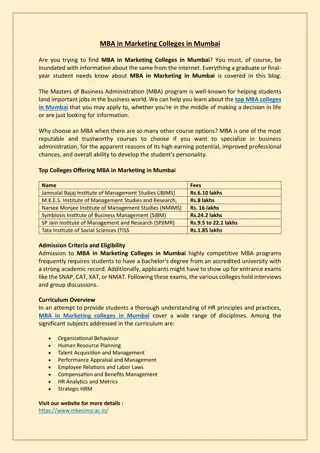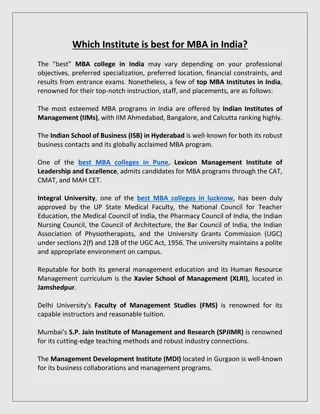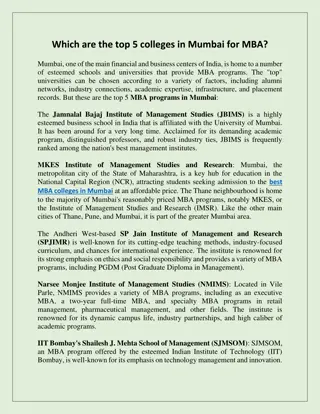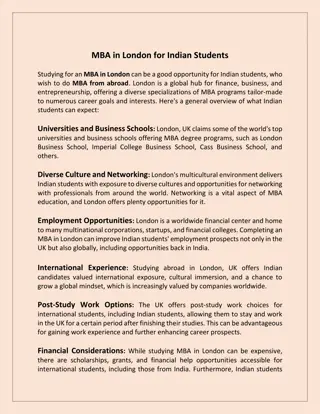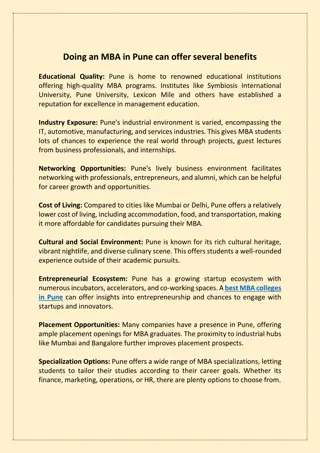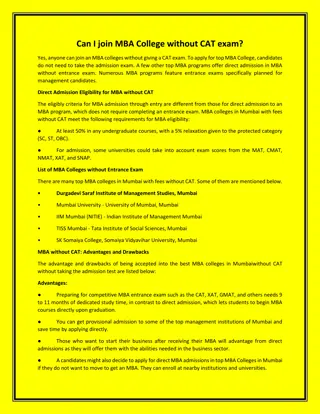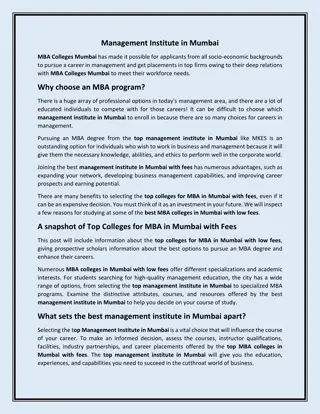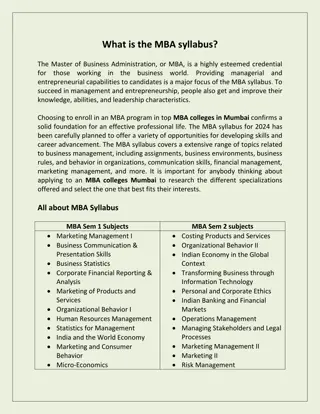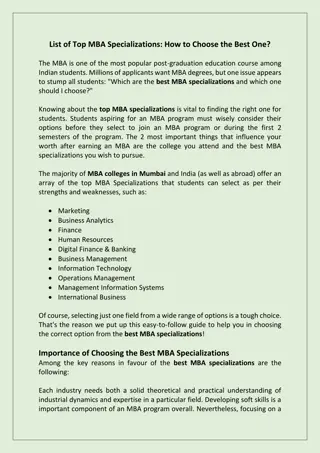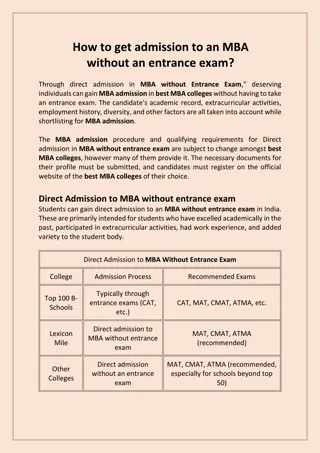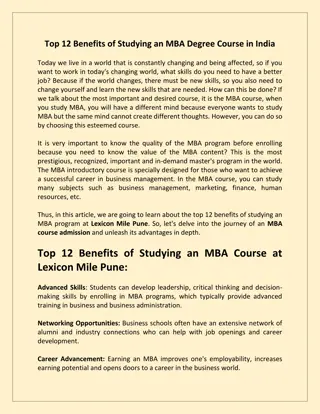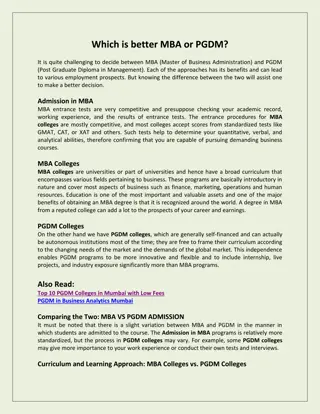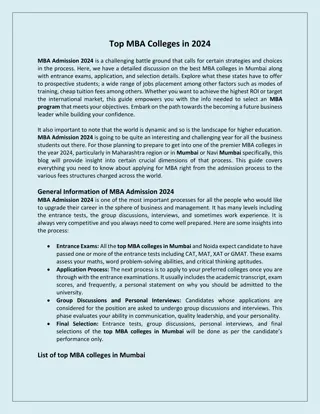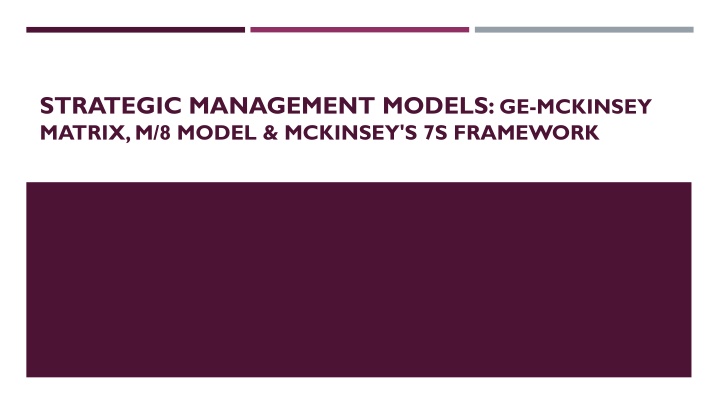
The GE-McKinsey Matrix for Strategic Business Analysis
Explore the GE-McKinsey Matrix, a strategic management model developed by General Electric and McKinsey & Company, to help prioritize business units based on industry attractiveness and business strength. Learn about its components, strategic implications, and see an example using Apple products.
Download Presentation

Please find below an Image/Link to download the presentation.
The content on the website is provided AS IS for your information and personal use only. It may not be sold, licensed, or shared on other websites without obtaining consent from the author. If you encounter any issues during the download, it is possible that the publisher has removed the file from their server.
You are allowed to download the files provided on this website for personal or commercial use, subject to the condition that they are used lawfully. All files are the property of their respective owners.
The content on the website is provided AS IS for your information and personal use only. It may not be sold, licensed, or shared on other websites without obtaining consent from the author.
E N D
Presentation Transcript
STRATEGIC MANAGEMENT MODELS: GE-MCKINSEY MATRIX, M/8 MODEL & MCKINSEY'S 7S FRAMEWORK
INTRODUCTION TO STRATEGIC MANAGEMENT MODELS Strategic models help businesses make decisions on investment, resource allocation, and organizational development. These models provide frameworks to analyze industry position, internal capabilities, and business strategies.
GE-MCKINSEY MATRIX Developed by General Electric and McKinsey & Company. Helps businesses analyze and prioritize strategic business units (SBUs) based on Industry Attractiveness and Business Strength.
COMPONENTS OF THE GE-MCKINSEY MATRIX Industry Attractiveness: Market growth, profitability, competition intensity, etc. Business Unit Strength: Market share, brand reputation, cost efficiency, etc. 3x3 matrix categorizing businesses into: Grow/Invest Selective Investment Harvest/Divest
STRATEGIC IMPLICATIONS Grow/Invest: High attractiveness and high strength focus on expansion. Selective Investment: Medium attractiveness analyze further before investing. Harvest/Divest: Low attractiveness consider withdrawing or repositioning.
APPLES GE-MCKINSEY MATRIX EXAMPLE Industry Attractiveness High: Smartphones (iPhone) & Tablets (iPad) Growing demand, strong profitability, clear product differentiation. Medium: Laptops, iTunes, iPod Moderate growth rates, rising competition in online music/apps & laptops. Low/Uncertain: iMac Slow growth in desktop market; lower market share.
BUSINESS UNIT STRENGTH Strong: iPhone, iPad, iTunes, iPod High market share (iPhone, iPad); pioneering music platform (iTunes & iPod). Medium: iMac Some loyal customers but limited overall market share. Lower: Laptops (facing intense competition and slower growth).
STRATEGIC IMPLICATIONS Invest/Grow: iPhone, iPad, iTunes, iPod Leverage strong market positions and high demand. Hold: iMac Market is uncertain; consider boosting sales through advertising, loyalty programs. Monitor/Selective Investment: Laptops Competitive market, lower growth rate, invest selectively.
OUTCOME Focus on the most profitable (high attractiveness + strong strength) products to maximize returns. Use the GE-McKinsey framework to guide resource allocation and future growth strategies.
M/8 MODEL Developed by McKinsey to assess strategic options for businesses. Focuses on 8 critical dimensions of business strategy.
KEY COMPONENTS OF THE M/8 MODEL 1. Market Position 2. Products & Services 3. Customer Base 4. Competitive Environment 5. Financial Performance 6. Growth Potential 7. Brand Strength 8. Operational Efficiency Application of M/8 Model Helps companies decide on diversification, market entry, and competitive strategies. Example: Tesla evaluating its electric vehicle product lines based on these factors.
MCKINSEYS 7S FRAMEWORK Developed to analyze organizational effectiveness and alignment. Helps in change management, restructuring, and performance improvement.
ELEMENTS OF THE 7S FRAMEWORK Strategy: Company s plan to achieve a competitive edge. Structure: Organizational hierarchy and reporting system. Systems: Processes and workflows governing operations. Shared Values: Core company values influencing culture. Skills: Employee capabilities and competencies. Style: Leadership approach and management style. Staff: Human resource policies, talent acquisition, and retention.
HARD VS. SOFT ELEMENTS Hard Elements: Strategy, Structure, Systems (Tangible and measurable). Soft Elements: Shared Values, Skills, Style, Staff (Intangible, culture-driven).
CONCLUSION GE-McKinsey Matrix helps in investment decisions for business units. M/8 Model evaluates key business dimensions for strategy formulation. McKinsey s 7S Framework aligns organizational components for effectiveness. Application of these models enhances strategic decision-making in businesses.


